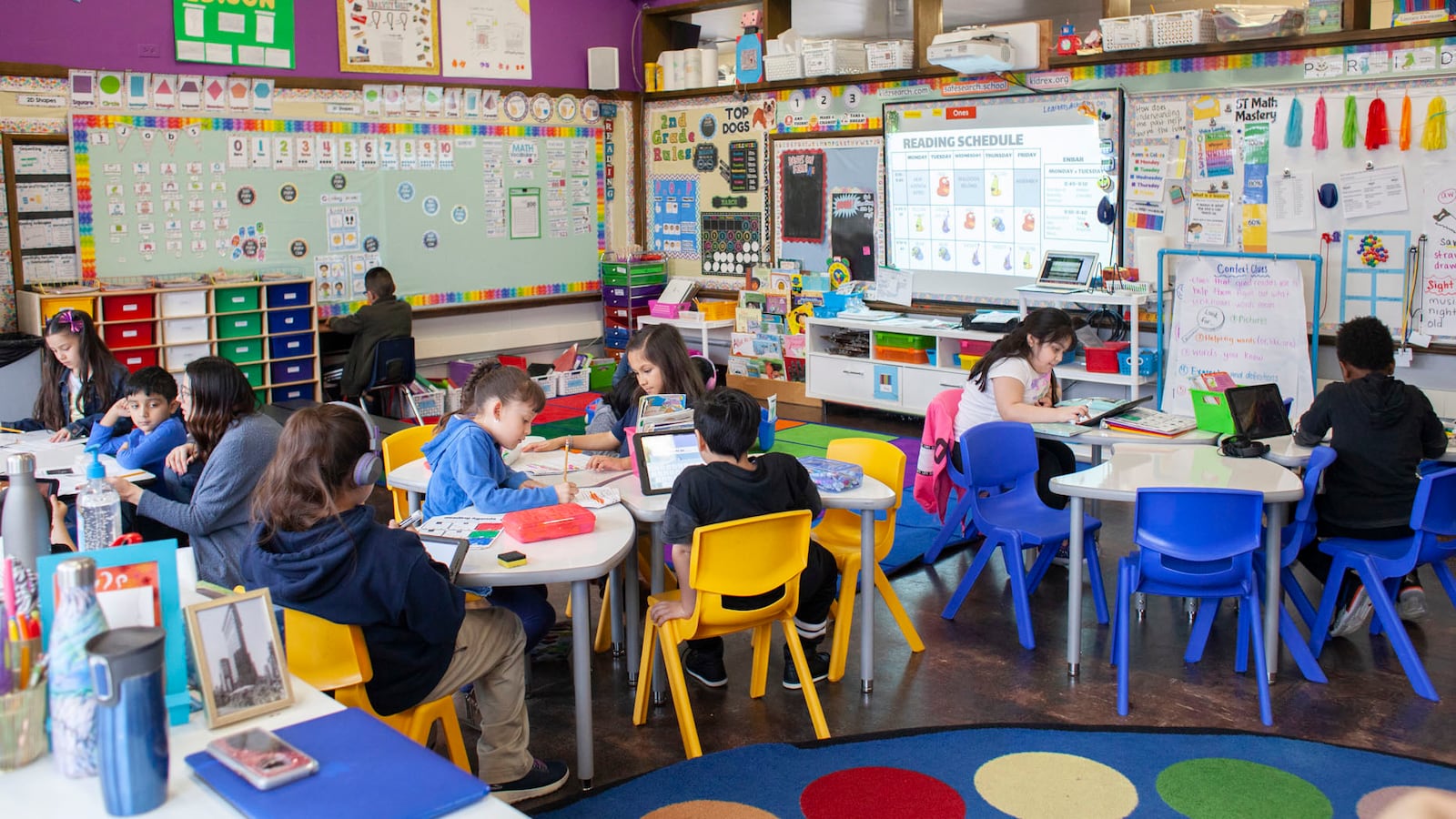Reading and math test scores for Chicago Public Schools students remained flat this year after a decade of significant improvement.
Nearly 63% of elementary school students met national norms in reading and 57% did so in math, according to the results released Tuesday.
This comes as newly-installed members of the Chicago Board of Education have questioned both the test itself, the NWEA MAP, and the way the results are used as a measure of a school’s quality.
Related: To search for results by school, click here.
Chicago uses the NWEA MAP as a key criterion to rate schools and for grade promotion, but it is not the state-mandated standardized test. Results of the state test are expected in October. School ratings look at how well students score on the NWEA MAP and how much students grow each year.
When asked to approve some changes to the school rating policy in June, some board members said they were uncomfortable with the heavy reliance on test scores. Test scores are tied to socio-economic status and not necessarily the quality of a school, they said. Schools serving poor students will always do worse, noted board member Dwayne Truss.
Truss also was concerned that the school district did not vet the changes to the policy with parents and community members. He pointed out that these ratings are important because parents use them to make decisions about where to send their children to school.
Also, board member Sendhil Revuluri said he was not comfortable with the use of the NWEA MAP. It was not designed to assess student achievement, but rather as benchmark exam to help teachers identify student weaknesses.
At the June board meeting, CPS CEO Janice Jackson defended the school district’s rating system, but agreed to undertake a process over the next year to reevaluate it.
On Tuesday, Jackson said she believes in using test scores as part of the way the school district rates schools and measures students. She said the district needs an objective measure of how students are performing compared to their peers. Not having such a measure, she said, would be a disservice to students.
“We can’t sell out kids short and tell them that those things don’t matter when everyone knows that key decisions about life after high school are based on how you perform in high school,” she said.
Jackson said she is focused on trying to boost performance on the test. The key to doing that, she said, is to make sure all students are getting the same quality of education.
“We are not going to meet the goals that are outlined in our vision unless we focus on equity and focus on improving the disparate outcomes of students of color and their peers,” she said.
The school district did not release test score data by race and ethnicity. School level data shows that 76% of the schools where less than half of the students met national norms in reading were majority black. Majority black schools make up only 46% of all schools in the district.
Jackson said Latino students are making better gains than black students.
Jackson said she and her education chief are “betting” on a three-year, $135 million undertaking in which the school district is developing curriculum for every grade and every subject. She said this will ensure all students have access to the high-quality lessons, though teachers will not be mandated to use it.
She also said the school district needs to have a certified teacher in front of students every day. This is an issue in Chicago. A WBEZ analysis showed that a third of Chicago Public Schools last year had a year-long teacher vacancy, which leaves them with little instruction for months.

Chalkbeat Chicago published this story in collaboration with WBEZ 91.5 Chicago.

